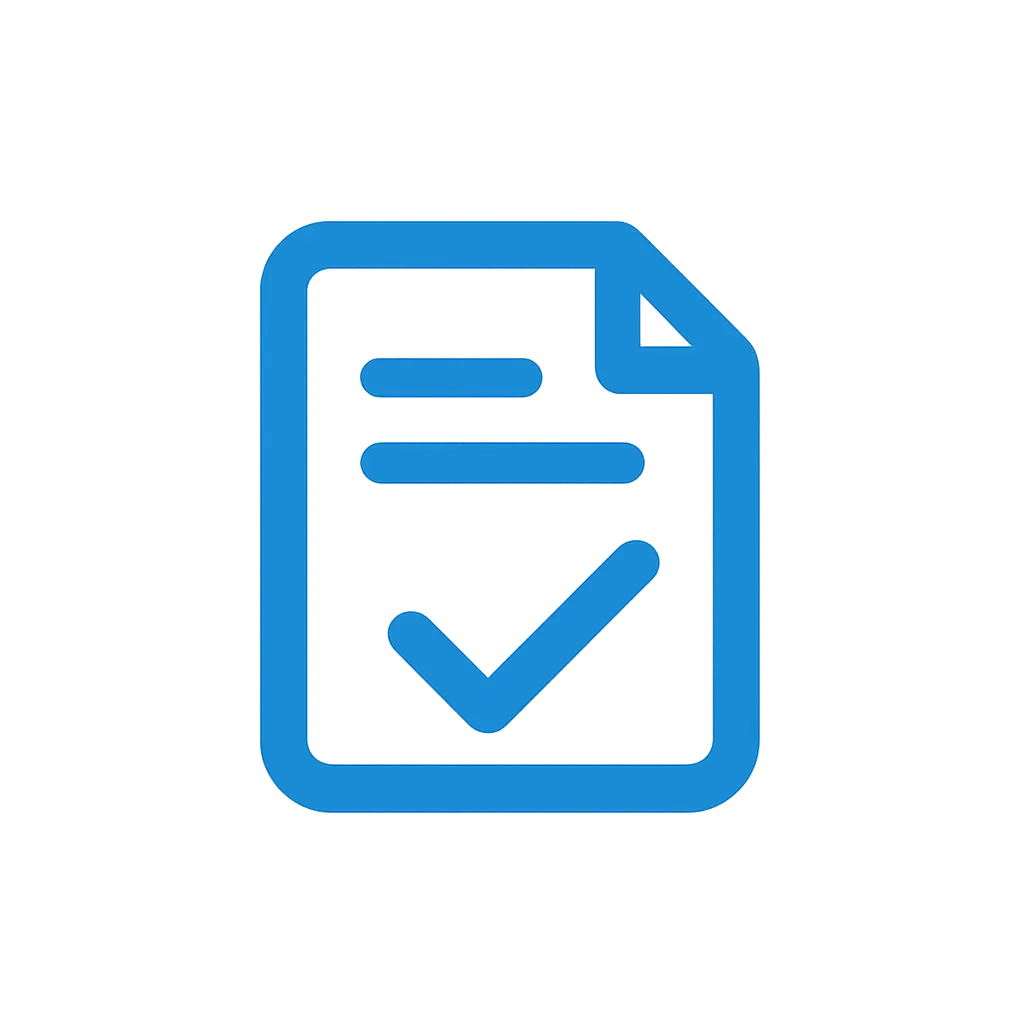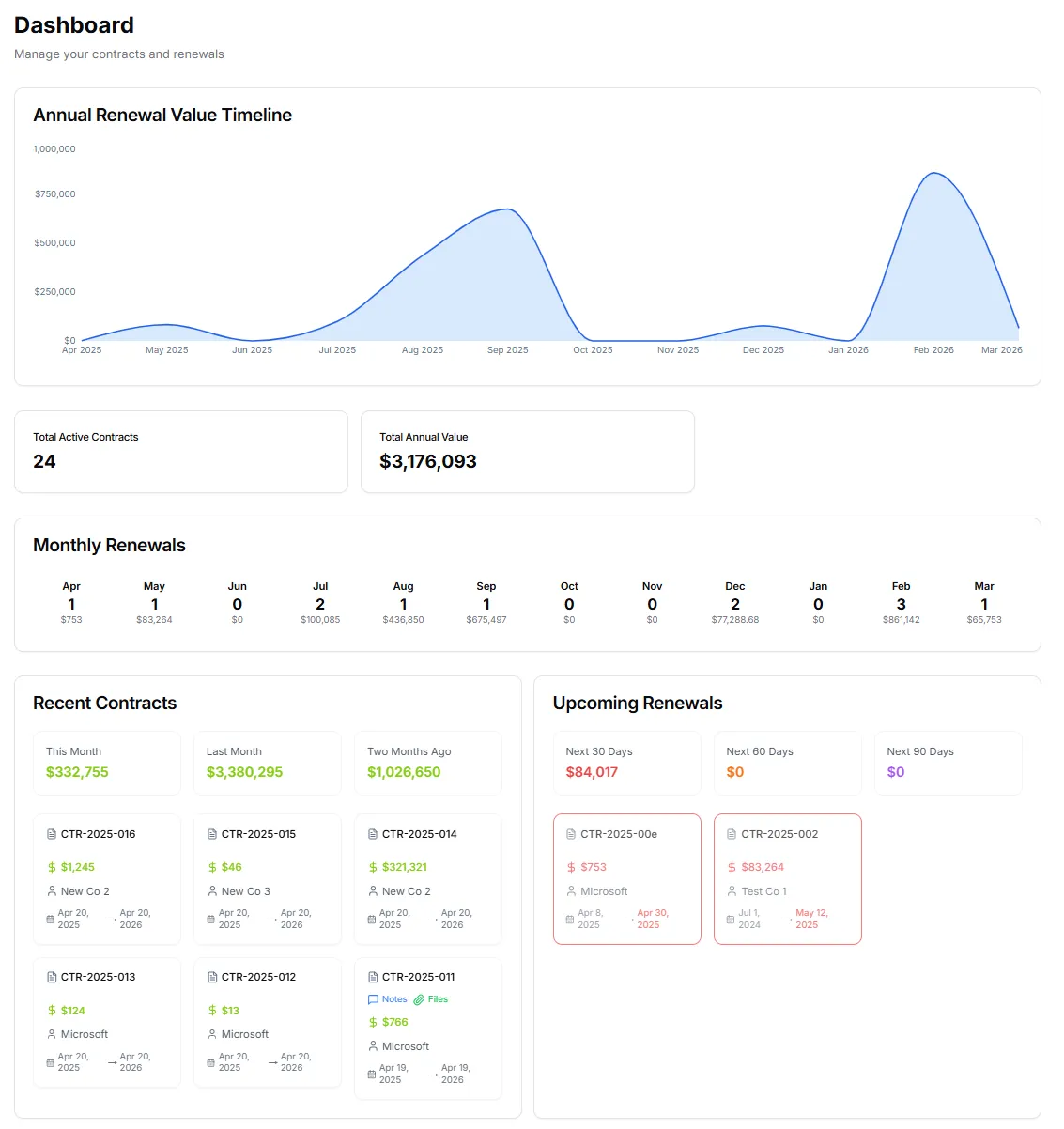
Coûts cachés de contrats faibles ? Améliorez-vous avec Contrax en 2025
Les coûts cachés d’un système de contrat client faible
Lorsque vous pensez aux risques de la chaîne d’approvisionnement, vous pensez probablement aux retards d’expédition, aux problèmes de qualité ou aux défaillances soudaines des fournisseurs. Mais il y a une menace plus discrète, et souvent beaucoup plus coûteuse, qui se cache juste sous votre nez : un système de gestion des contrats clients négligé. Si votre système de gestion des contrats avec les fournisseurs n’est pas à la hauteur, vous risquez de vous retrouver à perdre de l’argent d’une manière que vous n’aviez même pas envisagée.
Mettons en lumière les risques financiers cachés qui peuvent faire dérailler discrètement votre chaîne d’approvisionnement, gruger les bénéfices et exposer votre entreprise.
Négliger les augmentations annuelles – la fuite d’argent classique
Les contrats sont remplis de petits détails qui peuvent faire ou défaire vos résultats. Un coupable récurrent est la clause d'« augmentation annuelle ». De nombreux accords permettent des ajustements annuels des prix, généralement liés à l’inflation ou aux indices du coût de la vie.
Imaginez maintenant que vous avez des dizaines (ou des centaines) de contrats cachés dans différents dossiers, feuilles de calcul ou chaînes d’e-mails. Si personne ne suit ces dates d’examen, combien d’augmentations annuelles sont tout simplement oubliées ? En une seule année, cet oubli peut représenter des milliers, voire des millions, de revenus manqués ou de coûts inutiles.
Scénario du monde réel :
Une entreprise de services informatiques de taille moyenne a signé des ententes de trois ans avec plusieurs clients, chacune comprenant une augmentation annuelle de 3 % des frais de service. En l’absence de système central de gestion des contrats avec les fournisseurs, ces clauses ont pris la poussière. Trois ans plus tard, ils avaient perdu plus de 250 000 £. Ce genre de dérapage aurait pu être évité grâce à des rappels automatiques et à une visibilité claire des contrats.
Conseil exploitable
Configurez des alertes automatiques pour chaque anniversaire de contrat. Que vous utilisiez un système professionnel ou simplement un calendrier partagé, assurez-vous que quelqu’un est responsable de la révision de ces clauses chaque année.
L’attrition : le tueur de profits silencieux
Tout le monde parle d’acquérir de nouveaux clients, mais qu’en est-il de garder ceux que vous avez déjà ? Une mauvaise gestion des contrats permet aux clients de passer inaperçus. Si vous ne pouvez pas voir rapidement quels contrats expirent bientôt ou quels clients n’ont pas renouvelé, vous invitez à l’attrition – et cela coûte cher.
Pourquoi? Parce que le remplacement d’un client perdu coûte beaucoup plus cher que la fidélisation d’un client existant. Si votre système de gestion des contrats fournisseurs ne signale pas les renouvellements à venir ou ne vous permet pas d’analyser les taux d’attrition, vous naviguez à l’aveuglette.
Exemple:
Une entreprise SaaS s’est rendu compte que son taux de désabonnement augmentait. En creusant plus profondément, ils ont constaté que près de 20 % des contrats expiraient sans aucun engagement proactif de la part des gestionnaires de compte. En l’absence d’un flux de renouvellement clair, les clients se sont tout simplement éloignés.
Conseil exploitable
Investissez dans un outil de gestion des contrats qui suit les dates de renouvellement et envoie des rappels automatiques. Faites de l’analyse du taux d’attrition un point régulier de l’ordre du jour de vos réunions d’équipe, afin d’avoir toujours une longueur d’avance.
Gains par employé : la mesure cachée de l’efficacité
Souvent négligé, le salaire par employé est l’un des meilleurs indicateurs d’efficacité opérationnelle. Si vos processus contractuels sont manuels et chronophages, votre équipe passe de précieuses heures à courir après la paperasse, à fouiller dans les e-mails et à corriger les erreurs évitables. Cela fait baisser la productivité et, en fin de compte, la rentabilité.
Étude de cas:
Un distributeur avec une équipe de 50 personnes a constaté que l’administration des contrats accaparait 15 % du temps du personnel. Après être passés à un système de gestion des contrats avec les fournisseurs, ils ont réduit de moitié la gestion des contrats, libérant ainsi les employés pour des tâches plus précieuses. Le résultat ? Une hausse notable du salaire par employé en six mois.
Conseil exploitable
Mesurez le temps que votre personnel passe à gérer les contrats. S’il s’agit de plus de quelques heures par semaine et par personne, il est temps de rationaliser. Un bon système de gestion automatise le travail fastidieux, afin que votre équipe puisse se concentrer sur la victoire des affaires.
Regroupement : le risque de mettre tous vos œufs dans le même panier
Si vos contrats doivent tous être renouvelés en même temps, vous êtes confronté à ce que l’on appelle le renouvellement. Cela semble inoffensif, mais cela peut provoquer le chaos. Soudain, vos équipes commerciales, juridiques et financières sont submergées, essayant de renégocier des dizaines de contrats simultanément. Des détails importants sont manqués, les délais glissent et les clients peuvent se sentir négligés.
Pire encore, si plusieurs clients importants doivent être renouvelés au cours du même trimestre, vos revenus peuvent fluctuer considérablement en fonction de l’évolution de ces négociations.
Exemple pratique :
Une entreprise de logistique a découvert que 70 % des contrats de ses principaux clients avaient expiré au quatrième trimestre. Lorsque deux clients importants ont retardé le renouvellement, les flux de trésorerie de l’entreprise ont pris un sérieux coup, au moment même où ils devaient verser des primes de fin d’année.
Conseil exploitable
Établissez votre calendrier de renouvellement de contrat. Essayez d’étaler les renouvellements tout au long de l’année afin d’équilibrer la charge de travail et les revenus. Si vous repérez un cluster, envisagez de renégocier les conditions pour échelonner les renouvellements futurs.
Pourcentage de chiffre d’affaires des principaux clients ou partenaires : le piège de la concentration
Il est tentant de compter sur une poignée de gros clients pour la majeure partie de vos revenus. Mais si vous ne surveillez pas les détails du contrat avec ces clients, vous marchez sur une corde raide. Un système de gestion des contrats faible peut entraîner des obligations manquées, des fenêtres de renouvellement négligées ou des conditions défavorables qui passent inaperçues.
Prenons l’exemple :
Une entreprise de logiciels s’appuyait sur seulement trois clients pour 60 % de son chiffre d’affaires. En l’absence d’un système de gestion des contrats avec les fournisseurs approprié, ils ont manqué une mise à jour critique du niveau de service requise par un client. Le résultat ? Une résiliation de contrat et un coup dévastateur pour les revenus annuels.
Conseil exploitable
Examinez régulièrement la proportion du chiffre d’affaires liée à vos principaux clients ou partenaires. Utilisez votre système de gestion des contrats pour signaler les concentrations à haut risque et assurez-vous que ces comptes reçoivent une attention particulière.
Pourquoi s’embêter avec un système de gestion des contrats ?
Vous vous demandez peut-être : n’est-ce pas juste plus d’admin ? En fait, un bon système de gestion des contrats est rentabilisé plusieurs fois. Il rassemble tous vos accords en un seul endroit, automatise les rappels, signale les clauses à haut risque et vous donne une visibilité instantanée sur votre paysage contractuel.
Avec les systèmes modernes, vous pouvez :
Suivez automatiquement les augmentations annuelles et les dates de renouvellement
Analysez les tendances d’attrition et réagissez de manière proactive
Mesurez l’efficacité des contrats et les revenus par employé
Répartissez les renouvellements pour éviter le chaos du clustering
Surveillez la concentration des revenus et protégez vos plus gros comptes
Pour commencer : étapes pratiques
1. Auditez vos contrats en cours. Où sont-ils stockés ? Qui les gère ?
2. Identifiez vos plus grands risques. Vous manquez-vous d’augmentations annuelles ? Quand vos renouvellements sont-ils regroupés ?
3. Choisissez un système qui correspond à vos besoins. Ne choisissez pas l’outil le plus tape-à-l’œil, choisissez-en un que votre équipe utilisera réellement.
4. Formez votre équipe. Le meilleur système est inutile si personne ne sait comment l’utiliser.
5. Révisez régulièrement. Faites de la gestion des contrats un processus vivant, et non un projet ponctuel.
Si vous voulez voir comment cela fonctionne en pratique, SystemAssure ITSM offre des solutions de gestion des contrats qui aident les entreprises à éviter ces coûts cachés. Leur plateforme ( Contrax ) permet de suivre facilement les dates des contrats, les obligations et les risques liés aux revenus, le tout sans se noyer dans la paperasse.
Conclusion : Ne laissez pas les contrats miner votre chaîne d’approvisionnement
Les risques d’un système de gestion des contrats clients faible ne sont pas toujours évidents. Mais au fil du temps, les augmentations oubliées, les désabonnements évitables, les heures de travail perdues, les accumulations de renouvellements et la dépendance excessive à l’égard de quelques clients peuvent éroder discrètement votre entreprise.
Mettre de l’ordre dans votre système de gestion des contrats fournisseurs n’est pas seulement une question de conformité, il s’agit de protéger vos bénéfices et votre réputation. Prenez le temps de réparer les fuites maintenant, et votre chaîne d’approvisionnement (et vos résultats) vous en remerciera.





